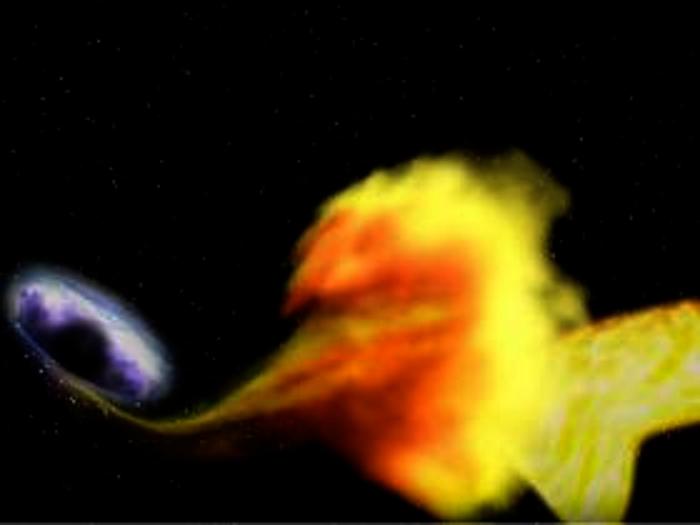Black holes are places where matter has been squashed to such a density by gravity that the normal laws of physics break down.
The new theory rejects the view that at the centre of a black hole spacetime curves to an infinite point known as a "singularity" and all matter is destroyed.
Instead, it proposes that the heart of the simplest type of electrically charged, non-rotating black hole, is a very small spherical surface. This acts as a "wormhole" - a doorway or tunnel through the fabric of spacetime of the kind seen in countless sci-fi stories.
In the movie Interstellar, a team of astronauts travel through a wormhole in search of a new home for humanity.
Dr Gonzalo Olmo, from the University of Valencia in Spain, said: "Our theory naturally resolves several problems in the interpretation of electrically-charged black holes.
"In the first instance, we resolve the problem of the singularity, since there is a door at the centre of the black hole, the wormhole, through which space and time can continue."
The wormhole predicted by the scientists' equations is smaller than an atomic nucleus, but gets bigger as more electrical charge is stored in the black hole.
A hypothetical traveller entering the black hole could be stretched thin enough to fit through the wormhole, like a strand of cotton threaded through the eye of a needle.
The new model also gets round the need for "exotic" energy or matter to create a wormhole.
According to Albert Einstein's theory of gravity, a wormhole can only appear in the presence of matter with highly unusual properties, possessing negative energy, pressure or density. Such "exotic matter" has never been observed.
"In our theory, the wormhole appears out of ordinary matter and energy, such as an electric field," said Dr Olmo.
The research is published in the journal Classical and Quantum Gravity.
Quelle: INDEPENDENT

